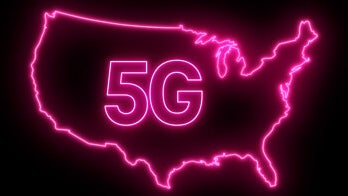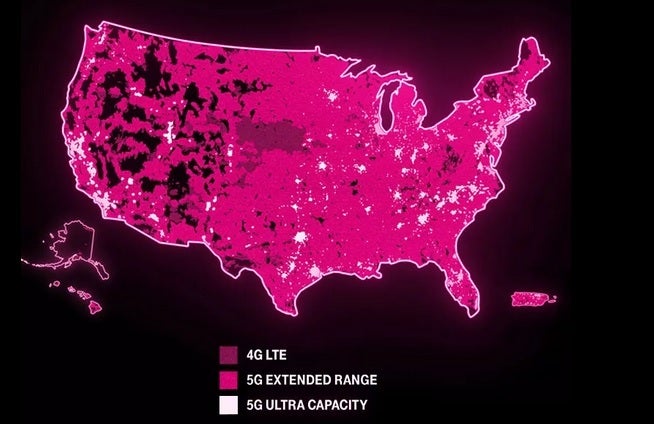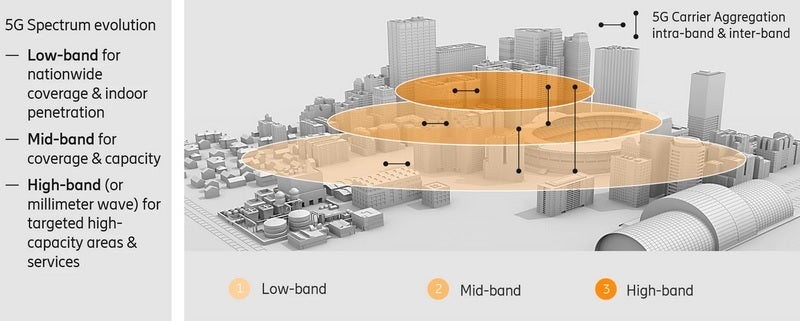T-Mobile to add more 5G coverage and speed after winning 3.45 GHz airwaves in FCC auction 110

T-Mobile announced that it has recently added to its 5G arsenal by winning an auction that gives it mid-band spectrum at 3.45GHz. This combines with the 2.5GHz mid-band airwaves it has owned since closing on the Sprint acquisition in April 2010. And this comes at a time when Verizon has catapulted itself into position as a legit 5G challenger to the current U.S. leader, T-Mobile, thanks to the activation of its C-band radios.
T-Mobile wins more mid-band spectrum in the FCC's latest auction
T-Mobile covers 210 million people in the U.S. with its fast mid-band 5G service and hopes that the $3 billion investment it made to win the additional mid-band spectrum in the FCC's Auction 110 will allow it to cover more 5G phone owners. The 3.45GHz airwaves won at the latest auction adds an average of 21MHz of spectrum covering an area where 184 million
people live.

T-Mobile's most recently published 5G coverage map
Neville Ray, T-Mobile's President of Technology, says, "We’re already delivering customers the largest, fastest, and most reliable 5G network, and we’re always working to make the best 5G network even better. While Verizon and AT&T remain locked in a 5G race for second place, we’ll use this additional spectrum to take our 5G network to the next level and deliver even greater 5G performance to our customers across the nation."
Of course, it wouldn't be an announcement from T-Mobile without the carrier taking a shot at Verizon and AT&T. In its blog post, the nation's second-largest carrier notes that the combination of the 2.5GHz spectrum from Sprint and the 3.45GHz airwaves won at auction will produce a network that its competitors can't equal despite spending over $80 billion in an attempt to do so.
310 million people in the U.S. are covered by T-Mobile's 5G service
T-Mobile notes that its 5G coverage in the states covers 310 million people, twice as large as AT&T and five times as large as Verizon. 210 million of them are accessing T-Mobile's Ultra-Capacity 5G. That is twice the number that uses Verizon's Ultra Wideband and "multitudes" more than the number that uses AT&T's 5G+. By the end of this year, T-Mobile plans to bring its 5G Ultra-Capacity 5G to 260 million people, hiking it even more to 300 million people by 2023.
While T-Mobile has the speed and coverage leads, turning on its C-band 5G network (except at towers nearby certain airports) allowed Verizon to hike its median 5G download data speed by 50% comparing the week before the January 19th launch and the week after. Following the C-band launch, T-Mobile saw its median 5G download data speed rise from 181.99 Mbps to 187.11 Mbps.
During that same period of time, AT&T's median 5G download data speed rose from 68.43 Mbps to 70.46 Mbps while Verizon's jumped from 76.51 Mbps to 116.29 Mbps.
T-Mobile added 5G Carrier Aggregation to increase 5G capacity and speed
Verizon and AT&T decided to start building out their 5G networks using mmWave spectrum. Yes, this delivers the fastest speeds in the 1Gbps area. However, mmWave signals do not travel far and are easily blocked by structures, trees, and anything in the signal's path. That is why not too many smartphone customers can access these signals.

Another explanation of the three layers of 5G networks courtesy of Ericsson
T-Mobile went after Sprint precisely for its 2.5GHz mid-band spectrum because it decided to take a different path than its competitors did. Mid-band spectrum won't offer the fastest 5G download speeds, but it can produce signals in the range of 300-400Mbps. Additionally, mid-band airwaves travel longer distances than mmWave, aren't easily blocked as mmWave is, and is faster than low-band 5G.
Verizon and AT&T came to the conclusion that it needed to license some mid-band spectrum to compete with T-Mobile.The FCC decided to use auction mid-band airwaves in the C-band and combined AT&T and Verizon spent a total of over $68 billion to add the much-needed mid-band capabilities to their 5G networks.
But T-Mobile had a trick up its sleeve. It added 5G Carrier Aggregation on January 19th. By combining two or more "chinks" of spectrum, the 5G network's capacity and speed increases.










Things that are NOT allowed: